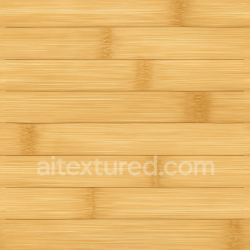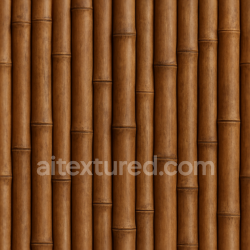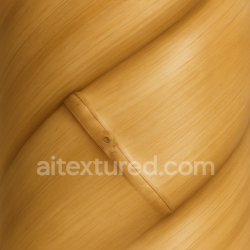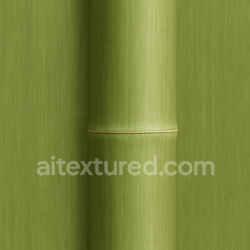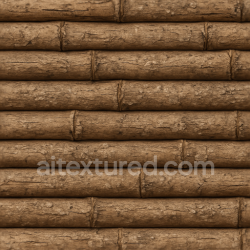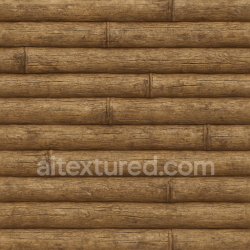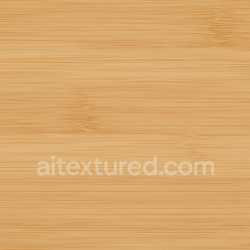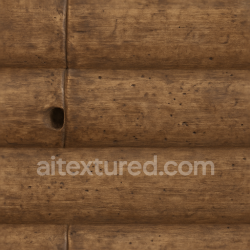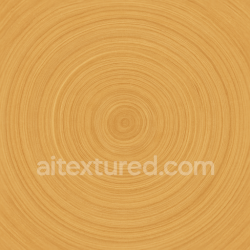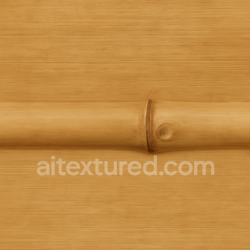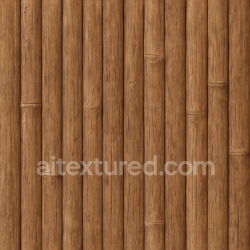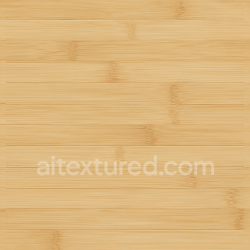Expert Guide to Merry Christmas PBR Textures for Photorealistic Holiday Scenes
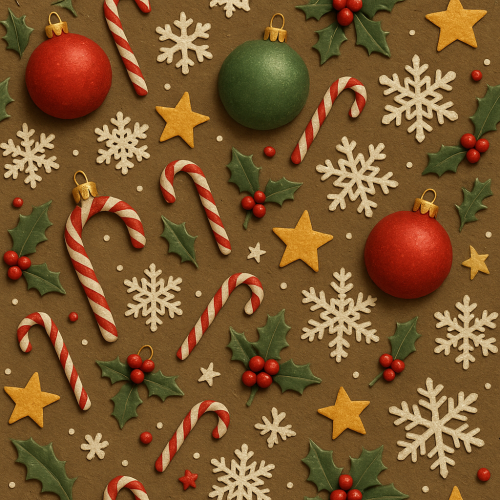
Photogrammetry remains one of the most effective methods for capturing complex surface details with high spatial fidelity. When targeting Christmas-themed assets—whether the rough bark of a pine branch or the delicate crystalline structure of a snowflake—careful preparation of the subject and controlled lighting conditions are paramount. Pine needles, for example, present a challenging surface due to their slender geometry and subtle micro-variations in color and roughness. A multi-angle capture using a DSLR or mirrorless camera with a macro lens, combined with a turntable setup, allows for comprehensive coverage. It is crucial to maintain consistent exposure and white balance across shots to avoid color discrepancies in the albedo channel. In addition, diffuse and specular highlights should be minimized during capture by using polarized light or a light tent, which helps isolate the diffuse albedo and reduces the need for extensive post-processing.
Once the photogrammetric data is processed into a textured mesh, it is essential to extract the PBR channels systematically. The base color, or albedo, must be carefully cleaned to remove shadows and specular contamination, often through a combination of software-based algorithms and manual painting. For Christmas textures, the subtle green hues of pine needles or the warm tones of wooden ornaments must remain true to life but also free of lighting artifacts. Ambient occlusion (AO) maps can be baked from the mesh geometry to accentuate crevices and overlaps, enhancing depth perception when composited in real-time engines. Normal maps derived from high-resolution scans are vital to replicate the fine bumps and grooves found on natural surfaces, such as the textured bark or the intricate veins of snowflakes, contributing to realistic light interaction.
Height or displacement maps gain importance in conveying the micro-relief of surfaces like the curled edges of pine needles or the uneven texture of hand-painted wooden decorations. Capturing these subtle variations requires either a structured light scanner or photometric stereo approaches, which can complement photogrammetry by providing precise depth information to enhance normal map fidelity. For metallic foils—often present in Christmas wrapping papers or ornament accents—the acquisition strategy shifts slightly. Reflective materials pose challenges to photogrammetry due to specular reflections and translucency. Here, a combination of high-resolution scanning with a calibrated multi-light setup, including directional and diffused lighting, allows separation of diffuse and specular components. Capturing the metallic channel for PBR involves isolating the specular reflectance characteristic of the foil, which is crucial for achieving convincing metallic reflections in the final material.
Tiling is a critical consideration when authoring Merry Christmas textures, especially for expansive applications like holiday-themed environment sets or wrapping paper patterns. While photogrammetry captures unique, high-detail patches, these often need to be adapted or augmented for seamless repetition without visible seams or pattern repetition artifacts. Techniques such as edge blending, clone-stamping in image editing software, and procedural variation introduced via tools like Substance Designer can be employed to generate tileable textures that maintain the original’s micro-variation and organic feel. Micro-variation is especially important in natural elements like pine needles or snow-covered branches to avoid unnatural uniformity that breaks immersion. Implementing subtle noise overlays or stochastic detail displacement in the roughness or normal maps enhances realism by simulating the inherent randomness found in nature.
Calibration of captured data against reference materials ensures physical accuracy throughout the PBR pipeline. Using calibrated color charts during capture sessions allows correction of albedo maps to standardized color spaces such as sRGB or linear sRGB, which is essential for consistent rendering across engines. Calibration also extends to ensuring roughness and metallic maps align with standardized reflectance values. For instance, the roughness of snow should reflect its unique scattering and microfacet distribution, appearing smooth at glancing angles but matte when viewed directly. Metallic foils, conversely, require precise metallic channel calibration to reproduce their high reflectance and anisotropic highlights accurately. Validation of these maps through test renders in engines like Unreal Engine or Blender’s viewport shader provides immediate feedback, facilitating iterative refinement of texture parameters.
Optimization is a practical necessity when preparing Merry Christmas textures for real-time applications, particularly in game engines or interactive visualization platforms. High-resolution scans can produce extremely large textures, often exceeding 8K resolutions, which may be impractical for performance budgets. A balance must be struck between resolution and detail preservation by leveraging mipmaps, channel packing, and texture atlasing. For example, ambient occlusion, roughness, and metallic maps can be packed into separate channels of a single texture to reduce draw calls and memory footprint. Additionally, normal maps can be compressed using BC5 or ASTC formats compatible with Unreal Engine’s texture pipeline, preserving detail while minimizing file size. LOD (Level of Detail) strategies can also be implemented to swap lower-resolution textures at distance, maintaining visual fidelity up close without taxing hardware resources.
When integrating Merry Christmas PBR textures into engines like Unreal Engine or Blender, attention to shader setup and material parameters is crucial. Unreal’s physically based material system benefits from the separation of metallic and roughness channels, allowing for dynamic adjustment of surface properties under varying lighting conditions. For instance, snow textures may incorporate subsurface scattering or translucency parameters to simulate light diffusion within snowflakes or frost layers. Blender’s node-based material editor provides similar flexibility, enabling artists to combine texture maps with procedural modifiers to enhance variability and realism. Engine-specific features such as Unreal’s Nanite virtualized geometry or Blender’s adaptive subdivision can also be leveraged in conjunction with displacement maps to add geometric detail without overwhelming polygon budgets.
In conclusion, acquiring Merry Christmas themed PBR textures is a multifaceted task that requires precise capture of both macro and micro details from diverse natural and decorative sources. Employing photogrammetry and scanning techniques under controlled lighting, combined with rigorous calibration, careful channel extraction, and thoughtful optimization, lays the foundation for high-quality, physically accurate materials. These textures, when properly authored and integrated, can deliver the rich visual complexity and festive authenticity essential for compelling holiday-themed 3D scenes and applications.
Creating high-quality "Merry Christmas" PBR textures requires a sophisticated interplay between procedural generation and photographic editing techniques, leveraging the strengths of each approach to achieve both authenticity and flexibility. The goal is to produce textures that not only capture the visual complexity and festive nuances of holiday-themed materials but also maintain seamless integration within physically based rendering workflows. This section unpacks how the combination of photo references and procedural tools can be harnessed to enhance texture variation, seasonal aesthetics, and technical reliability, with a focus on the core PBR maps—albedo, roughness, normal, ambient occlusion (AO), height, and metallic—along with considerations for tiling, micro-variation, calibration, and real-time engine application.
At the heart of authoring Christmas-themed textures is the need to represent materials that resonate with seasonal motifs—be it frosted wood, shiny baubles, knitted fabrics, or glittering tinsel—while ensuring they behave predictably under physically based lighting conditions. Photographic references provide an invaluable foundation for capturing the subtle color shifts, surface imperfections, and intricate details characteristic of holiday decor. High-resolution photo captures of real-world objects such as wreaths, ribbons, wrapping paper, and ornaments serve as the albedo source, conveying the base color information with rich chromatic fidelity. However, photographic albedo maps often require significant post-processing to conform to PBR principles. This entails desaturating specular highlights embedded within the diffuse channel, neutralizing baked lighting effects, and carefully balancing saturation to prevent color bleeding in reflections.
Procedural generation complements photographic workflows by offering parametric control over texture features that can be difficult to capture or replicate through photos alone. For instance, procedural noise and pattern generators can introduce consistent micro-variation—fine-scale surface irregularities and subtle color shifts—that prevent the texture from appearing overly uniform when tiled. In the context of Christmas textures, procedural masks can simulate snow accumulation patterns, frost crystals, or the fibrous weave of knitwear, adding depth and authenticity without reliance on large photographic source files. These procedural elements can be blended with photographic inputs using node-based editors in tools like Substance Designer or Blender’s Shader Editor, enabling artists to non-destructively tweak the balance between hand-crafted detail and algorithmic randomness.
Normal maps, essential for conveying surface relief without geometry overhead, benefit enormously from a hybrid approach. Photographic inputs can be converted into normal maps through tools such as xNormal, CrazyBump, or Substance Designer’s height-to-normal conversion nodes. However, direct conversion often results in overly sharp or noisy normals that do not tile well or may amplify photographic artifacts. Here, procedural normal map generation allows for smoothing, frequency control, and the introduction of synthetic details like subtle fabric grain or wood grain that align directionally with the object’s geometry. Combining these procedural normals with photo-derived maps through blending or overlay techniques yields a more natural and visually coherent surface representation, particularly important for elements like knitted textures or embossed wrapping paper.
The roughness map, controlling the microsurface reflectance, is another critical element where procedural and photographic data merge effectively. Photographic sources rarely provide accurate roughness information, as camera sensors and lighting conditions can distort specular cues. Instead, roughness maps are often authored procedurally using grayscale noise patterns, curvature maps, or ambient occlusion to simulate how light scatters differently across various materials. For example, in a Christmas bauble texture, the smooth glass surface would have very low roughness, while any painted or frosted decorations would show higher roughness values. Procedural masks can delineate these zones precisely, allowing for dynamic adjustment of roughness values to match the intended physical properties. Calibration against real-world reference materials is crucial here: artists often compare rendered results in engines like Unreal Engine or Blender’s Eevee to photographic references under standardized lighting to ensure the roughness accurately modulates specular highlights and glossiness.
Ambient occlusion maps serve to enhance perceived depth by darkening crevices and areas occluded from ambient lighting. While AO can be baked from high-poly geometry, procedural AO generation can help fill gaps or add fine-scale occlusion effects consistent with the seasonal context. For instance, the folds in a Christmas sweater or the overlapping layers of pine needles in a wreath can be accentuated with procedural AO overlays. This technique provides greater control over the intensity and scale of occlusion, enabling artists to prevent overly dark or flattened appearances that sometimes result from baked AO alone. Moreover, mixing procedural AO with baked maps can help maintain performance optimization, as procedural AO can be generated on-the-fly or baked at lower resolutions without sacrificing visual quality.
Height maps, used primarily for parallax occlusion or displacement effects, often require careful authoring to avoid introducing geometric artifacts. Photographic height extraction can be noisy and might contain irrelevant high-frequency details, which are better filtered or supplemented with procedural height data. For Christmas textures, height information can highlight the raised surfaces of knitted stitches, the embossed patterns on gift wrap, or the granular texture of snow. Procedural height maps can be algorithmically adjusted to emphasize these features uniformly across the texture, ensuring seamless tiling and reducing repetition artifacts. Additionally, height maps can be calibrated to match the displacement scales supported by the target rendering engine, such as Unreal Engine’s tessellation or Blender’s adaptive subdivision, to maintain visual fidelity without excessive performance costs.
Metallic maps, while less common in traditional Christmas textures, are applicable for materials like metallic ornaments or foil wrapping paper. Photographic data can provide a starting point for metallic zones by isolating specular reflections and color shifts typical of metals. However, metallic channel authoring usually leans more heavily on procedural masks and manual painting to define precise metal versus non-metal regions, given the binary nature of metallic values in the PBR workflow. Careful edge blending between metallic and non-metallic areas is essential to avoid harsh transitions that break immersion.
Tiling and texture variation pose fundamental challenges when creating festive textures for large surfaces such as wallpaper, tablecloths, or large-scale decorations. Photographic textures often suffer from visible seams and repetition artifacts, which procedural texturing can mitigate through randomized pattern generation and dynamic variation. Techniques such as triplanar projection combined with procedural noise overlays help mask seams without requiring UV unwraps optimized for tiling. Furthermore, integrating procedural masks to vary detail density and color subtly across the surface introduces perceptual micro-variation that breaks monotony and enhances realism. For example, slight color shifts in a knitted fabric or random dusting of snow can be procedurally scattered to achieve a naturally imperfect appearance consistent with real-world materials.
Calibration across different engines is a critical step to ensure the authored Christmas textures behave as intended under various lighting models. Unreal Engine’s physically based shading pipeline, for instance, requires textures to be linearized and gamma-corrected appropriately, with roughness and metallic maps stored in linear space. Blender’s Cycles and Eevee renderers have nuances in how normal maps are interpreted (OpenGL vs DirectX conventions) and how subsurface scattering or translucency impacts the final appearance. Artists must therefore validate their textures by rendering test scenes with standardized lighting setups, using reference materials for comparison. This iterative calibration process often involves adjusting texture levels, remapping grayscale ranges, and refining procedural parameters to achieve consistent results across platforms.
Optimization is another essential consideration, especially for real-time applications. Procedural texturing can reduce texture memory usage by generating detail at runtime, but excessive complexity may incur shader cost penalties. Photographic textures, while visually rich, can inflate asset size and loading times. A balanced workflow employs baked textures for the broad color and detail information, supplemented by lightweight procedural overlays for variation and subtle effects. Mipmapping strategies, channel packing (e.g., storing roughness, metallic, and AO in different channels of a single texture), and resolution scaling based on camera distance further optimize performance without sacrificing visual quality.
Practical tips for integrating these approaches begin with establishing a robust photo capture and preprocessing pipeline. Use controlled lighting to minimize shadows and reflections in albedo captures, shoot multiple angles to aid in normal and height map generation, and employ high-bit-depth images to preserve color accuracy. Next, procedurally generate masks and detail maps in node-based tools, leveraging curvature and ambient occlusion outputs to guide roughness and height variations. Blend these with photographic inputs using soft blending modes and noise to avoid harsh transitions. Finally, export textures in appropriate formats (e.g., PNG, TGA, or DDS with BC7 compression for Unreal Engine) and ensure consistent texel density to prevent scaling artifacts.
In summary, the synthesis of procedural and photographic authoring methods unlocks a powerful toolkit for developing "Merry Christmas" PBR textures that are visually rich, technically sound, and adaptable to diverse rendering environments. This blend enables artists to faithfully reproduce the unique material qualities of festive elements while maintaining the scalability and performance required for modern 3D workflows. Mastery of this integration ultimately results in textures that enhance the immersive spirit of the holiday season through compelling, physically accurate surface detail.
Developing a fully realized PBR texture set for festive materials, such as those encountered in "Merry Christmas" themed assets, requires a meticulous approach that balances physical accuracy with artistic intent. Holiday materials often combine a diverse range of surface characteristics—from the soft, diffuse scattering of cozy fabrics like wool and velvet, to the sharp specular highlights of gold foil accents, the irregularities of snowy surfaces, and the warm, tactile feel of rustic woods. Each of these demands careful attention across the core PBR maps: albedo, roughness, metalness, normal, height, and ambient occlusion (AO). Understanding how to properly acquire, author, and optimize these maps ensures convincing results in real-time engines like Unreal Engine or Blender’s Eevee and Cycles renderers.
Starting with the albedo or base color map, the primary goal is to capture the intrinsic color information of the material without baked-in lighting or shadow details. For holiday fabrics—think knitted sweaters, plush velvet ribbons, or felt decorations—capturing subtle color variations and fine-scale patterning is critical. These materials often benefit from high-resolution source photography or generated scans that preserve micro-variation such as slight color shifts due to fiber direction or weave density. When authoring albedo textures, it’s imperative to desaturate any lighting influence to avoid baked shadows or highlights, which can interfere with the physically based shading model. For instance, a wool sweater’s albedo should reflect the diffuse light scattering through the fibers, not the specular glints or environmental reflections. Using calibrated linear workflow ensures that the color values remain consistent across engines. It’s also advisable to maintain a neutral mid-tone gray in the albedo’s mid-values to improve energy conservation in the shader.
Roughness maps define how light scatters microscopically on the surface, controlling the sharpness or blur of specular reflections. Festive materials often present a wide roughness spectrum, from the matte softness of felt and fabric to the mirror-like gloss of metallic ribbons or gold leaf. For cozy fabrics, roughness tends toward higher values (0.6–0.9), with micro-roughness variations that simulate fiber bundles and subtle surface imperfections. To author these maps, a combination of procedural noise textures and hand-painted detail can be effective. Photogrammetry or scanned data can also provide a reliable baseline, but often require refinement to remove noise or overly sharp transitions. For metallic foil accents, roughness values drop dramatically, often below 0.2, to replicate the polished, reflective quality of gold or silver. Careful calibration here is necessary, as overly low roughness values can cause aliasing or unrealistic reflections in real-time engines. Using mipmapping and anisotropic filtering techniques can help maintain fidelity when viewing at different distances or angles.
The metalness map plays a pivotal role in PBR workflows by indicating which parts of the material behave as metals and which as dielectrics. In holiday materials, this map is typically binary or near-binary: gold foil and metallic ornaments are assigned a metalness value of 1, while fabrics, snow, and wood remain at 0. However, subtle transitions can exist—oxidized or worn metal surfaces might have partial metalness values to simulate patina or dirt accumulation. It’s essential to avoid introducing metalness values on non-metal materials, as this can cause unrealistic shading artifacts, especially in reflections and energy conservation calculations. When authoring metalness maps, use a clean, high-contrast mask and test in your target engine’s shader to ensure correct interpretation. In Unreal Engine, for example, the metalness channel directly influences the Fresnel response and specular intensity, so calibration with reference materials is recommended.
Normal maps provide the fine geometric detail that interacts with lighting to create the illusion of surface complexity without additional geometry. For festive fabrics, normal maps must capture the subtle undulations of knitted patterns, velvet pile direction, or the soft fuzziness of felt. These details are often at micro or meso scales and require high-frequency information to avoid a flat appearance. When authoring normals, consider combining baked displacement from high-poly sculpts or photogrammetry data with procedural noise to introduce micro-variation. For gold foil, normal maps need to represent the crinkles, creases, and embossing typical of thin metallic sheets, which scatter light unevenly and create dynamic highlights. Snow surfaces present a particular challenge: they exhibit a granular structure with fine crystalline facets that need to be captured in the normal map to simulate sparkling and diffuse scattering effects. Rustic wood, by contrast, benefits from normals that emphasize grain patterns, knots, and surface wear. Calibration is crucial to ensure normal strengths are consistent across materials; excessive normal map intensity leads to exaggerated surface bumps and lighting artifacts, while insufficient intensity results in a flat look.
Height maps, or displacement maps, complement normals by providing actual geometric offset information that can be used in tessellation or parallax occlusion mapping. In holiday-themed assets, height maps contribute to the perceived depth of knitted stitches on sweaters, the embossing on metallic ribbons, or the uneven accumulation of snow on surfaces. When authoring height maps, ensure they are stored in a linear grayscale format with zero representing the base surface and white representing the maximum displacement. It is important to keep height map values normalized to avoid excessive tessellation that can cause mesh distortion or performance issues. In Blender, height maps can be plugged into displacement nodes with adaptive subdivision, while Unreal Engine supports height-based parallax occlusion for efficient depth illusion without geometry overhead. Height maps also aid in generating ambient occlusion maps during baking by providing accurate surface contours.
Ambient occlusion maps enhance the realism of materials by simulating the self-shadowing of concave areas where light penetration is limited. AO is especially important in festive materials with intricate surface topology—knitted loops, folds in ribbons, the crevices in wood grain, or snow piled unevenly around branches. Properly baked AO maps can be integrated into the roughness or albedo channels or used separately as a multiply mask in shaders. When baking AO, use high-resolution meshes and cage settings to prevent light bleed and ensure crisp shadow definition. In real-time engines, combining AO with dynamic lighting allows for richer material interaction, but static AO maps remain valuable for subtle ambient shadowing.
Tiling and micro-variation are critical considerations when authoring PBR textures for materials expected to cover large surfaces or repeat across assets. Uniform repetition can break immersion, especially in holiday scenes where natural variation is expected. To mitigate visible tiling, incorporate randomized detail layers, subtle noise patterns, and multi-scale variation during texture creation. For fabrics, this might mean layering hand-painted imperfections or fiber direction shifts; for metallic foils, subtle crease patterns that vary in scale and orientation; for snow, randomized crystalline structures that break uniformity; and for wood, varying knot sizes and grain direction. Using trim sheets or detail masks enables localized variation without excessive texture memory usage. Additionally, consider the texture resolution relative to the asset scale to maintain detail fidelity without unnecessary performance cost.
Calibration and optimization are paramount throughout the PBR workflow. Employing reference materials under consistent lighting conditions ensures maps adhere to physically plausible parameters. Use standardized lighting rigs or HDRIs in Blender or Unreal Engine to preview how albedo, roughness, metalness, and normal maps interact. Adjust roughness and metalness values iteratively to achieve energy-conserving reflections and highlights. Optimize texture sets by compressing channels where possible—packing roughness and metalness into a single texture’s green and blue channels is common practice—and using mipmaps with appropriate filtering to reduce aliasing artifacts. When targeting real-time engines, balance texture resolution and channel packing with shader complexity to achieve smooth frame rates without sacrificing material quality.
Finally, practical engine usage tips include leveraging Unreal Engine’s material editor to create layered materials that combine fabric base coats with metallic trims and snow overlays, each driven by their own texture sets. Use masks to blend roughness and metalness maps dynamically, enabling weathering effects such as frost buildup or foil wear. In Blender, node groups can modularize PBR parameters, facilitating rapid iteration and reuse across assets. Both engines support procedural noise and detail maps that can be combined with authored textures to enhance micro-variation dynamically, reducing the need for ultra-high-resolution bitmaps.
In summary, creating complete PBR maps for festive materials demands a holistic approach that respects the physical properties of diverse surfaces while addressing the unique aesthetic qualities of holiday objects. Through careful acquisition, authoring, calibration, and optimization of albedo, roughness, metalness, normal, height, and AO maps, artists can achieve convincing, performant textures that bring seasonal assets to life in any real-time or offline rendering context.
